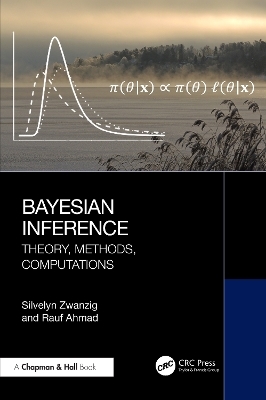
Bayesian Inference
Chapman & Hall/CRC (Verlag)
978-1-032-11809-3 (ISBN)
Bayesian Inference: Theory, Methods, Computations provides a comprehensive coverage of the fundamentals of Bayesian inference from all important perspectives, namely theory, methods and computations.
All theoretical results are presented as formal theorems, corollaries, lemmas etc., furnished with detailed proofs. The theoretical ideas are explained in simple and easily comprehensible forms, supplemented with several examples. A clear reasoning on the validity, usefulness, and pragmatic approach of the Bayesian methods is provided. A large number of examples and exercises, and solutions to all exercises, are provided to help students understand the concepts through ample practice.
The book is primarily aimed at first or second semester master students, where parts of the book can also be used at Ph.D. level or by research community at large. The emphasis is on exact cases. However, to gain further insight into the core concepts, an entire chapter is dedicated to computer intensive techniques. Selected chapters and sections of the book can be used for a one-semester course on Bayesian statistics.
Key Features:
Explains basic ideas of Bayesian statistical inference in an easily comprehensible form
Illustrates main ideas through sketches and plots
Contains large number of examples and exercises
Provides solutions to all exercises
Includes R codes
Silvelyn Zwanzig is a Professor for Mathematical Statistics at Uppsala University. She studied Mathematics at the Humboldt University of Berlin. Before coming to Sweden, she was Assistant Professor at the University of Hamburg in Germany. She received her Ph.D. in Mathematics at the Academy of Sciences of the GDR. She has taught Statistics to undergraduate and graduate students since 1991. Her research interests include theoretical statistics and computer-intensive methods.
Rauf Ahmad is Associate Professor at the Department of Statistics, Uppsala University. He did his Ph.D. at the University of Göttingen, Germany. Before joining Uppsala University, he worked at the Division of Mathematical Statistics, Department of Mathematics, Linköping University, and at Biometry Division, Swedish University of Agricultural Sciences, Uppsala. He has taught Statistics to undergraduate and graduate students since 1995. His research interests include high-dimensional inference, mathematical statistics, and U-statistics.
Silvelyn Zwanzig is a Professor for Mathematical Statistics at Uppsala University. She studied Mathematics at the Humboldt University in Berlin. Before coming to Sweden, she was Assistant Professor at the University of Hamburg in Germany. She received her Ph.D. in Mathematics at the Academy of Sciences of the GDR. She has taught Statistics to undergraduate and graduate students since 1991. Her research interests include theoretical statistics and computer-intensive methods. Rauf Ahmad is Associate Professor at the Department of Statistics, Uppsala University. He did his Ph.D. at Göttingen University, Germany. Before joining Uppsala University, he worked at the Division of Mathematical Statistics, Department of Mathematics, Linköping University, and at Biometry Division, Swedish University of Agricultural Sciences, Uppsala. He has taught Statistics to undergraduate and graduate students since 1995. His research interests include high-dimensional inference, mathematical statistics, and U-statistics.
1. Introduction
2. Bayesian Modelling
3. Choice of Prior
4. Decision Theory
5. Asymptotic Theory
6. Normal Linear Models
7. Estimation
8. Testing and Model Comparison
9. Computational Techniques
10. Solutions
11. Appendix
Index
| Erscheinungsdatum | 10.07.2024 |
|---|---|
| Zusatzinfo | 79 Line drawings, black and white; 79 Illustrations, black and white |
| Sprache | englisch |
| Maße | 156 x 234 mm |
| Gewicht | 520 g |
| Themenwelt | Mathematik / Informatik ► Mathematik ► Statistik |
| ISBN-10 | 1-032-11809-1 / 1032118091 |
| ISBN-13 | 978-1-032-11809-3 / 9781032118093 |
| Zustand | Neuware |
| Informationen gemäß Produktsicherheitsverordnung (GPSR) | |
| Haben Sie eine Frage zum Produkt? |
aus dem Bereich


